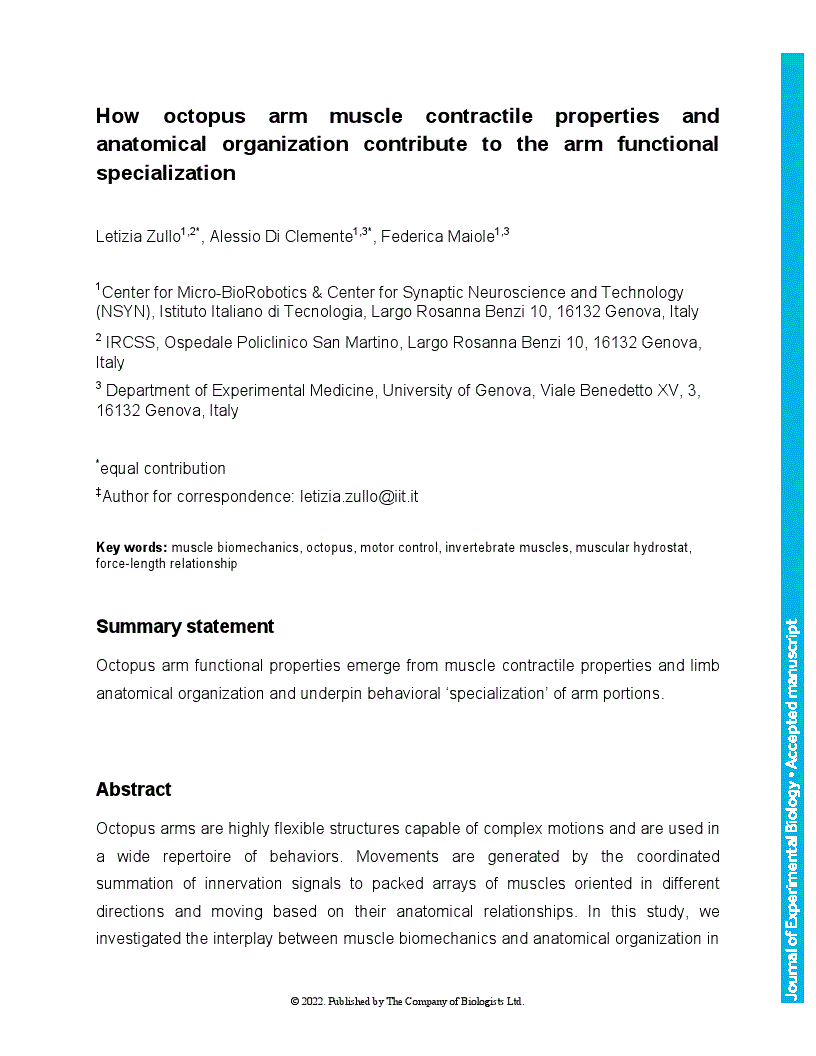Octopus arms are highly flexible structures capable of complex motions and are used in a wide repertoire of behaviors. Movements are generated by the coordinated summation of innervation signals to packed arrays of muscles oriented in different directions and moving based on their anatomical relationships. In this study, we investigated the interplay between muscle biomechanics and anatomical organization in the Octopus vulgaris arm to elucidate their role in different arm movements. We performed isometric and isotonic force measurements on isolated longitudinal (L) and transverse (T) arm muscles and showed that L has a higher rate of activation and relaxation, lower twitch-to-tetanus ratio, and lower passive tension than T muscles, thus prompting their use as faster and slower muscles, respectively. This points to the use of L in more graded responses, such as those involved in precise actions, and T in intense and sustained actions, such as motion stabilization and posture maintenance. Once activated, the arm muscles exert forces that cause deformations of the entire arm, which are determined by the amount, location, properties and orientation of their fibers. Here, we show that, although continuous, the arm manifests a certain degree of morphological specialization, where the arm muscles have a different aspect ratio along the arm. This possibly supports the functional specialization of arm portion observed in various motions, such as fetching and crawling.
Hence, the octopus arm as a whole can be seen as a ‘reservoir’ of possibilities where different types of motion may emerge at the limb level through the co-option of the muscle contractile properties and structural arrangement.








